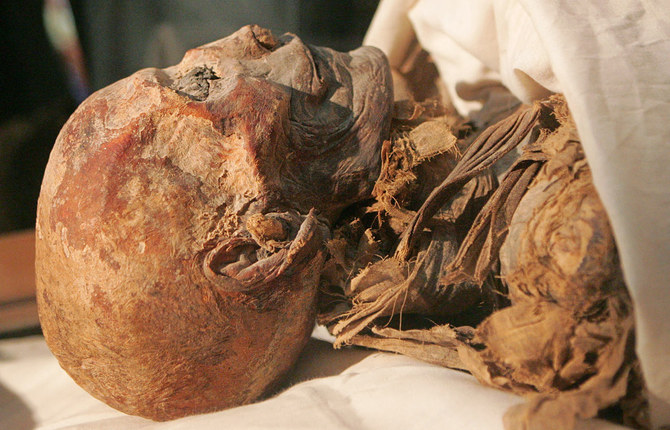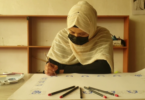Laila Mohammed
CAIRO: The Egyptian Museum in Cairo is displaying four new artifacts depicting the details of a trade mission sent by Queen Hatshepsut to the kingdom of Punt (East Africa) over 3,000 years ago.
Museum official Sayed Abbas said the artifacts have attracted “a large number of visitors.”
Archaeologist Ahmed Abdel Karim told Arab News: “The newly displayed pieces date back to the New Kingdom era, or the Eighteenth Dynasty (around 1550 to 1295 BCE). They are made of painted limestone and were cut from the wall of Queen Hatshepsut’s temple at Deir El-Bahari to commemorate an important trade expedition she sent to Punt, a state located somewhere along the Red Sea coast south of Egypt, possibly in the current regions of Somalia and Eritrea.”

He continued: “Hatshepsut sent a mission to this African country to acquire exotic goods, including unusual animals, gold, incense, ebony, and even trees for the temple’s garden.
“One of the artifacts depicts the king and queen of Punt. The king is extremely thin, wearing a long sash, armed with a dagger tucked into his waist belt, and having a long, slender beard. The queen appears excessively overweight with a severe curvature of the spine, and rolls of fat on her arms, body, and legs. She is wearing a sleeveless dress, tied with a belt at the waist, and adorned with a necklace featuring large disc-shaped beads, as well as bracelets and anklets.”
Magdy Shaker, a senior archaeologist at the Egyptian Ministry of Tourism and Antiquities, told Arab News: “Hatshepsut is one of the greatest queens in history. She conducted a military campaign in Nubia to secure the country’s southern borders. She was also the first to wear gloves, due to a congenital defect (she reportedly had six or more fingers on one hand). This was unknown until her mummy was discovered. In most statues made for her, her hands appeared normal, as she ordered sculptors to depict them so. She was also the first to embroider gloves with precious stones.”
Shaker continued: “She was the eldest daughter of King Thutmose I. Her father had an illegitimate son, Thutmose II, whom she agreed to marry in line with royal family traditions — sharing the throne with him after her father’s death. This solution addressed the issue of having a legitimate heir from the few women who ascended the throne of Egypt. She adeptly managed the reign for 22 years, ensuring her memory would be eternally commemorated in history.”







